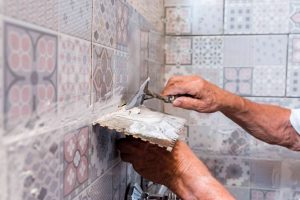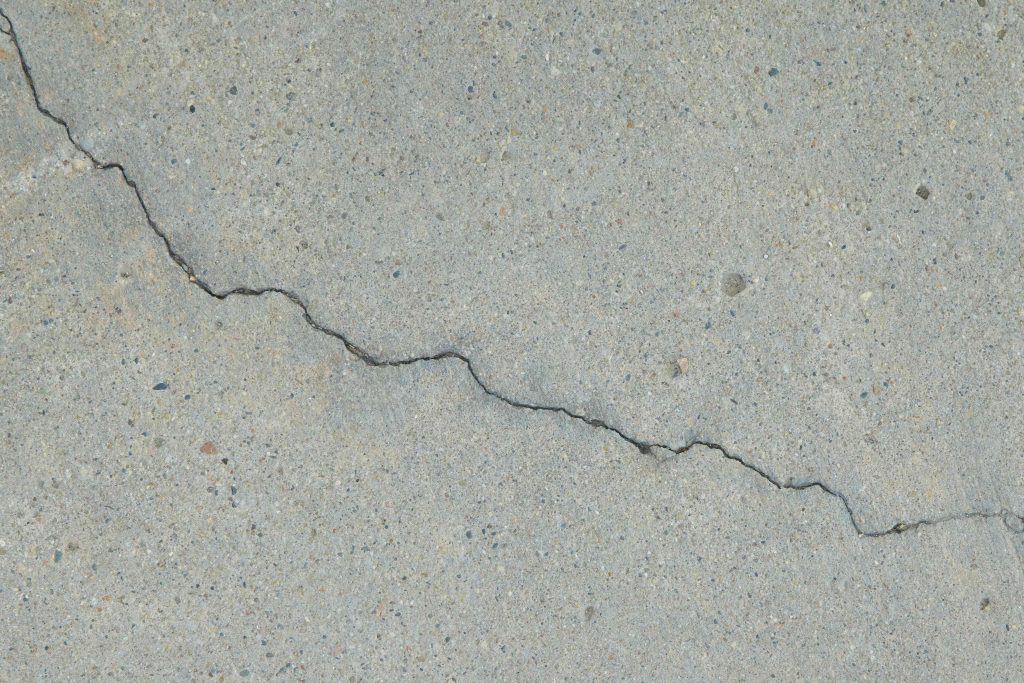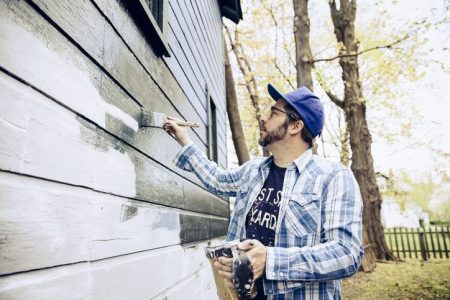Wide cracks in concrete are best patched and sealed with a concrete patching compound. Smaller cracks, less than 1/4 inch wide, can be repaired with a concrete caulk or liquid filler. Patching compounds typically are mixed with water and applied with a trowel. They have a texture similar to grout and can be smoothed and textured to blend with the surrounding area. However, the color of the patch will look like new concrete and will not match the old concrete. Hiding the patch completely requires painting the surface with an appropriate concrete paint.
Take caution before beginning your repair and make sure to follow the patching compound’s directions. You should make sure to wear rubber gloves when handling patching compound as well as safety glasses to protect your eyes.
When to Call a Professional
If a crack is minor or just cosmetic, as long as you feel comfortable with your skills, it’s usually something you can repair yourself. If a crack is more severe, you should definitely call a concrete crack repair service. You generally should consult a professional if the crack is wider than 1/4 inch, uneven, or if you notice structural cracking on your driveway.
How to Repair Wide Concrete Cracks
The secret to fixing wide concrete cracks is to undercut the sides of the crack to give it an inverted “V” shape. This helps the repair material to “key” into the crack, creating a mechanical bond in addition to the chemical bond between the patch material and the concrete.
- Chisel the crack with a hammer and masonry chisel to widen the base of the crack and to dislodge any loose material from the old concrete.
- Remove all debris from the crack, using a wire brush. If desired, clean the crack with a pressure washer or a garden hose and spray nozzle.
- Remove all water and debris from the crack with a wet/dry shop vacuum or a brush. Work carefully to remove all dust and grit from the crack. It’s OK if the surfaces are wet, but there should be no pools of water.
- Mix the concrete patching compound, following the manufacturer’s directions.
- Trowel the compound into the crack. Stab the trowel into the compound to remove air pockets and help work the patching material deep into the crack. Fill the crack up to the surrounding concrete surface.
- Smooth the surface of the patch with the trowel, feathering the compound into the surrounding concrete.
- Brush the surface of the patching compound with a dry paintbrush to texture the surface, if desired.
- Let the compound cure as directed.
- Paint or seal the surface of the patch and surrounding area, if desired.
How to Repair Narrow Concrete Cracks
Narrow concrete cracks can be filled using masonry crack elastomeric filler that can be applied with a caulking gun. Alternatively, many products come in bottles with an applicator tip.
- Start the repair by stuffing foam backer rod into the crack to create a base to hold the repair material.
- Backer rod is sold in a variety of sizes; use a rod diameter that is slightly larger than the width of the crack.
- Stuff the backer rod into the crack with a screwdriver to a depth of 1/4 inch.
- Fill the crack with the repair material, following the manufacturer’s directions.
- For very small cracks, such as hairline cracks, repair using a vinyl concrete patching compound applied over the crack and then smooth with a putty knife or trowel. Applying repair caulk or crack filler over the cracks usually is not effective, as the caulk tends to peel off of the surface over time.
-
Can cracked concrete be fixed?
Smaller cracks can be repaired with a concrete caulk or liquid filler.
-
How long does concrete crack repair last?
Crack sealing can last up to eight to 10 years if done properly, making it a dependable treatment.
-
Can you pour cement on top of cement?
Cement lacks any natural bonding agents, so it will be difficult for the poured cement to properly bond to the existing cement.
Read the full article here














